Animals have adapted their ecosystems and environments since the beginning of time, but recently species have been forced to adapt at an increasingly alarming rate. So, how do animals adapt to their environment? We’ll cover everything you need to know, including a few case studies.
Animal adaptations can be observed at any time on every continent, in every ocean, and affect every species on the planet. As the Greek philosopher, Heraclitus once stated, “Change is the only constant.” But precisely how do animals adapt to their changing environments, and in what ways have humans impacted animals’ abilities to adapt?
An adaptation is an evolutionary response that a species of plant or animal collectively makes over time to address a challenge to its survival.
Challenges to an animal’s survival affect one or more of an animal’s four basic needs: access to clean drinking water, food, protective shelter, and procreation.
These challenges are born from a change or threat to the animal’s ecosystem.
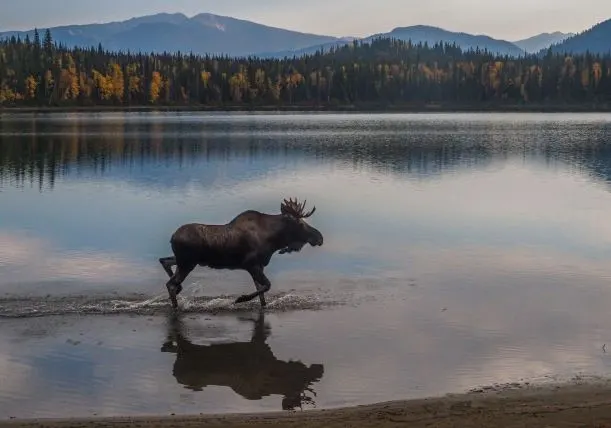
There are two types of adaptations: structural or physical adaptations and behavioral adaptations.
Structural or Physical Adaptations
Structural or physical adaptations are changes to any part of an animal’s physical body. An example of a structural adaptation can be found by observing moose. Moose — the largest animals in my native Minnesota — have developed long, powerful legs to escape danger and for better access to obtain food.
A moose can run up to 35mph, matching or even exceeding the speed of its main predator, the gray wolf. Its long legs also give the moose a height that aids in detecting predators from afar and allows it to reach into trees for vegetation during snowy winters.
Fun fact: the moose’s long legs also give it a reputation as one of the fastest swimming land mammals in North America, matching the beaver’s swimming speed of 6mph!
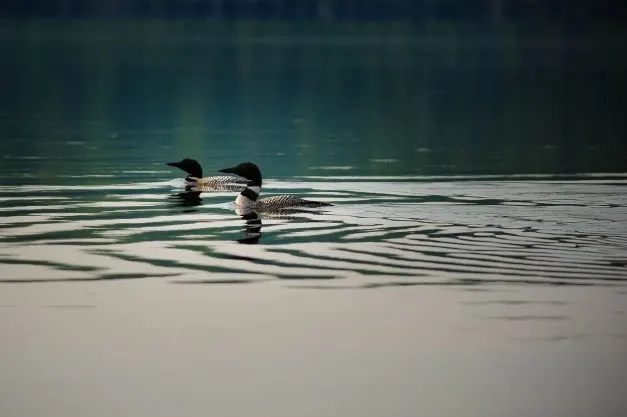
Behavioral Adaptations
Behavioral adaptations are changes made to the way an animal reacts and responds to its environment. The best natural example of a behavioral adaptation can be found by observing the migrations of Minnesota’s state bird, the loon.
A migration is an animal’s temporary relocation to different habitats. For loons, this occurs seasonally. The entire species travels south to regions along the Pacific and Atlantic coasts (sometimes over 1,000 miles) between September and November. In late spring, they return to the northern parts of the U.S. and Canada.
While it’s easy to understand why loons leave their northern territories during winter for the warmer, more plentiful waters of the southern coasts, the question is, why do they return north instead of just staying where it’s warm? There is a straightforward answer: to attract mates and breed.
Loons have made the behavioral adaptation of migrating north during the spring for the survival of their species.
Loons need calm, clear shorelines and large lakes to build their nests on, which do not exist along ocean coasts.
While a loon can enjoy fishing in the crashing, turbulent ocean during the winter, it is a very dangerous place to raise young in the summer.
The clear, less-polluted waters in the Land of 10,000 Lakes make for an ideal environment for loon chicks.
Therefore, as loons have not found any physical adaptations to breeding along the oceanic coasts, they have adapted their behavior to accommodate the survival of their species
See Related: Best Small Pellet Stoves in 2023.
Animal Adaptations Over Time
The changes that take place during animal adaptations, like the moose and its long legs, often occur over tens or even hundreds of thousands of years through the process of natural selection. Over time, individual animals in a species that have developed an adaptation that is advantageous in their environment will survive at a greater rate than those who do not have the adaptation.
This means that other animals who have developed an adaptation that ensures survival will be more likely to mate. As they mate, they will pass the adaptation onto their offspring through their genes.
This animal adaptation will then spread through a species as more individuals are born with it, ensuring that these adapted individuals continue to survive and thrive over others in their species.
Animal Adaptation: The Moose
In the case of the moose, one of its distant ancestors was most likely born with longer legs than the rest. This ancestor found an advantage because its height allowed it to detect predators sooner and reach more foliage during the brutal winter months.
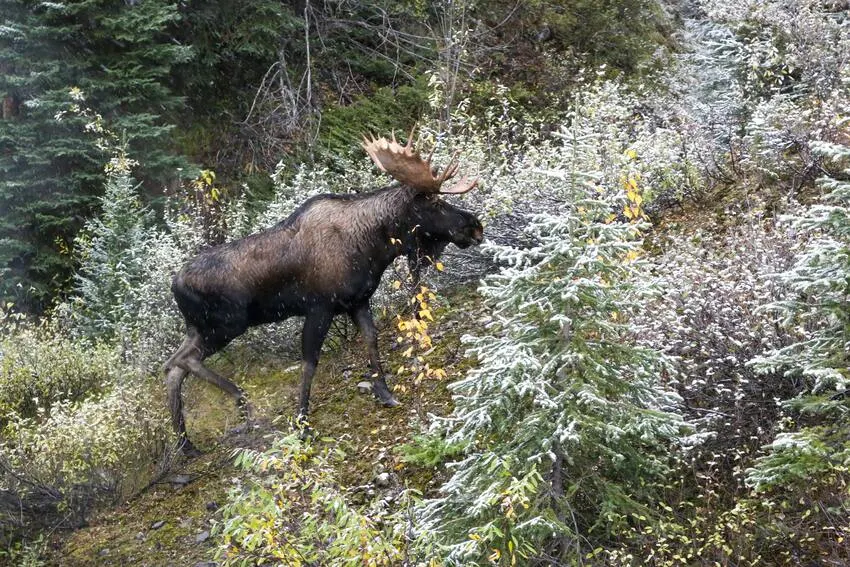
The quicker escape and assurance of food made it easier for the moose with long legs to survive.
The moose then passed these genes on to its calves, who also possessed longer legs and, in turn, experienced a greater rate of survival. Eventually, the entire moose species developed long legs to meet the predatorial and scarcity challenges of their environment.
Unfortunately, as physical adaptations rely on the process of natural selection, which can take hundreds if not thousands of years, this is becoming less of an option for animals to meet new challenges brought on by humans.
Instead, we’re seeing many animals resorting to extreme and sudden behavioral adaptations due to human impact on their environments because they don’t have the time to enact structural changes.
See Related: 12 Reasons Why Animals Should Not Be Kept in Zoos
Human-Influenced Adaptations
As humans continue to increase their influence over the planet, animals are forced to adapt to the conditions and challenges we give them.
While different animals adapt well or have learned how to just get by in human-influenced environments, others are suffering, and the extinction list is growing every year.
The City Raccoon
In major cities across North America, the common raccoon is currently thriving in highly populated areas. A team of researchers from York University in Toronto, Canada, found that raccoons have made many behavioral adaptations to their new urban environments.
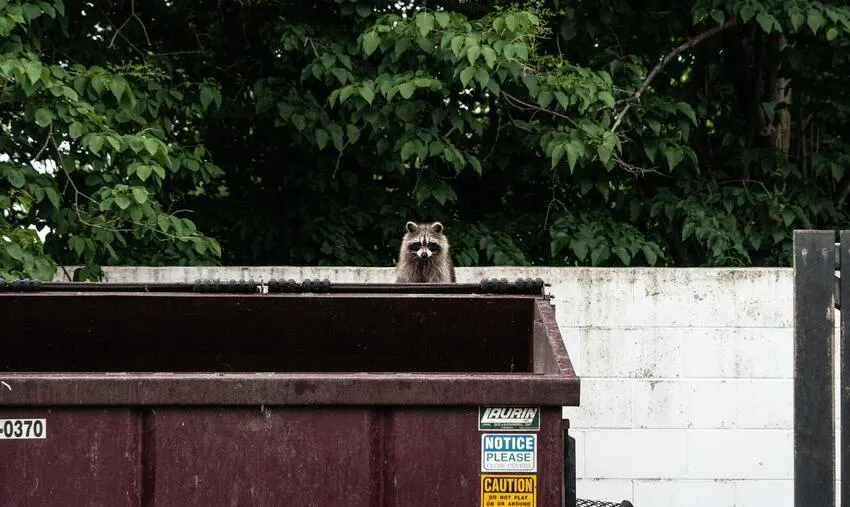
Raccoons are not only experts at understanding where food is to be found and use critical thinking skills to get at it, but have also made their territories smaller to avoid crossing traffic.
On top of that, another team of researchers found that city raccoons have had a Jimmy Neutron “Brain Blast!” moment and now show an expanded brain size and more brain activity than raccoons in rural areas.
The Meandering Manatee
Further south, while not thriving, American manatees have found a more worrisome way to get by. Manatees do not have much insulating body fat, and therefore, if hit with a prolonged period of cold weather, they can develop hypothermia quickly and die.
With the explosion of climate change, weather extremes are becoming more frequent and intense. Though manatees typically stay warm during the winter by residing near natural underwater hot springs, one solid winter storm and a prolonged period of cold waters would be enough to kill an entire herd.
Manatees on the coast of Florida have found something warmer than hot springs to adapt to their environment: power plant discharge pipes.
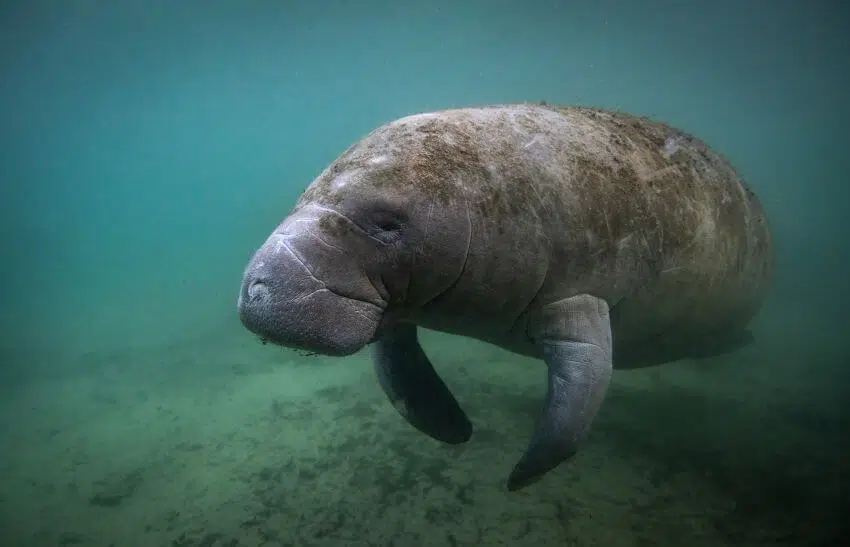
Power plants along the coasts draw water in to cool off their systems, and when its expelled back out into rivers and oceans, the water retains its warmth. It is the perfect temperature for manatees.
The main worry here is not that the manatees are ingesting polluted waters (though they definitely could be) but that they are becoming reliant on human resources.
If a plant suddenly shuts down and there are no hot springs nearby, entire populations of manatees could freeze and suffer the consequences of their human dependence.
But while some animal adaptations are successful and develop at a rate that matches the speed of change in their environment, more species struggle to adapt fast enough.
These animals are losing their habitats, sources of food and clean water. Their breeding and hunting grounds become smaller every year.
Pikas on the Precipice
Like the American Pika, some species adapt as much as possible by moving to the very edge of their habitat range, but it’s not enough. As human encroachment and climate change continue to push pika into ever smaller areas, they’re running out of livable space.
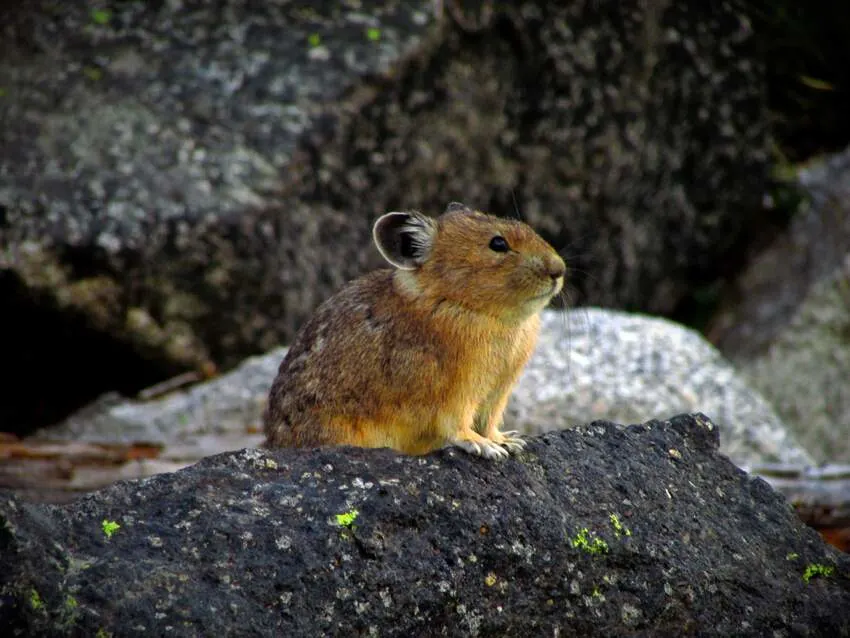
What Happens When An Animal Can’t Adapt?
Today, environmental crises caused by humans are erupting across the globe. It is currently estimated that “About 75% of land and 66% of ocean areas have been ‘significantly altered’ by people,” according to a report from the Intergovernmental Science-Policy Platform on Biodiversity and Ecosystem Services (IPBES).
We are directly influencing animal adaptations from their natural habitat both from a physical adaptation perspective as well as a behavioral perspective.
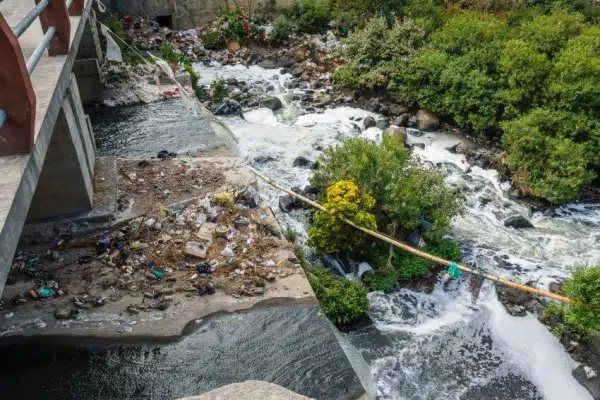
Humans are harming the world that we live in. From planet-wide crises such as global climate change to more local concerns such as the Midwest’s declining pollination of native and food crop plants stemming from the loss of Rusty Patched Bumble Bees which are currently on the endangered species list.
When a challenge to an individual animal’s basic needs is too great, and the animal cannot find a way to adapt, it dies. When every individual animal that makes up a species cannot find a way to adapt, the entire species is lost forever.
According to a recent study, over 8.7 million different plant and animal species exist here on Earth.
We lose at least 10,000 species every year due to the inability of plants and animals to adapt to what we’ve thrown at them.
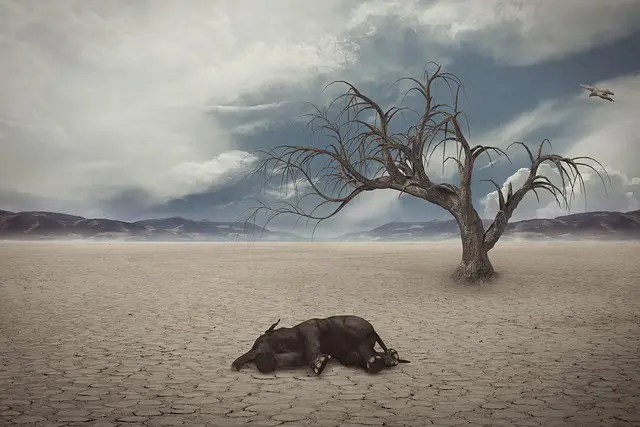
See Related: Are Humans Animals? Things to Know
The Terrible Impact of Ignoring Animals’ Inability to Adapt
A new term has emerged alongside climate change: extinction denial. It means exactly what it sounds like, that a significant amount of people have started to believe that the scientific alarm bells streaming out from extinction lists are fake because they haven’t seen extinction events for themselves.
However, extinction events usually take time, and in today’s fast-paced world, they can easily be overlooked.
In the Netflix documentary Chasing Coral, a recreational diver named Richard Vevers notices that his favorite corals are starting to turn white and die in his favorite diving locations. He teams up with an underwater film crew and a team of researchers to document coral reef bleaching events worldwide.
Coral reef bleaching is when the symbiotic relationship between the coral and its algae (the primary source of the coral’s food production) becomes stressed due to extremely warm or cold waters. The stressed and overheated (or frozen) coral will completely expel all of its algae.
The coral turns white in the absence of color brought by the algae and, without its main source of food, can starve to death.
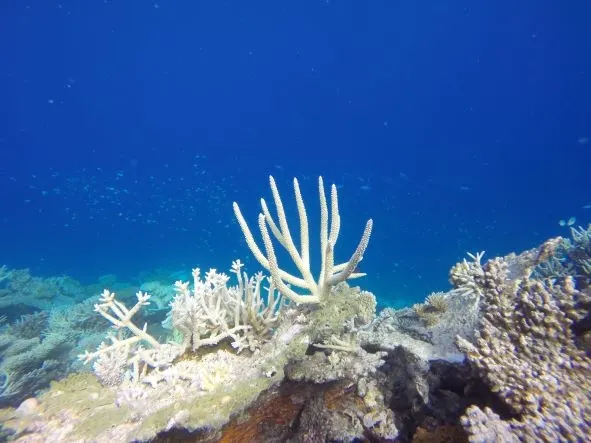
The extremes in water temperature are a symptom of climate change and will only continue to become more frequent and intense. Corals are unable to structurally adapt fast enough to the extremes in water temperature and have not shown any successful behavioral adaptations to these events.
In Chasing Coral, the team documented one of the most significant and largest bleaching events in known history during 2016 with time-lapse photos taken underwater every day at the same location for over a month. This event killed 67% of a 400-mile stretch of the Great Barrier Reef in Australia.
The massive amount of death during this bleaching event didn’t just affect the corals. Coral reefs are the perfect illustration of biodiversity, holding 25% of the world’s marine species.
We’re still learning the extent of the impact that bleaching events have on marine life around the globe.
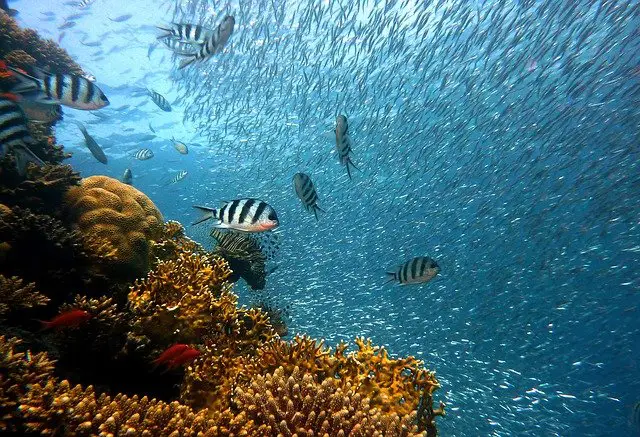
An animal or plant’s inability to adapt to challenges in its environment, especially the rapidly-paced difficulties brought on by humans, can not only affect that one species but a plethora of species that rely upon each other or interact together. Even humans can be affected by this.
Over half a billion people rely on coral reefs as a source of food or income, and populated coastlines depend on the reefs for protection from destructive waves.
A growing number of people deny the ongoing extinction of species because they don’t physically see them happening. But even if you can’t see it, you can still feel the effects of it.
Extinction denial is not only real, it is dangerous for our planet and ecosystems everywhere.
See Related: 10 Ways to Save Animals Facing Extinction
What Can I Do To Help Animals Adapt?
While terms like “extinction denial” become more common and the growing numbers of endangered and extinct species worsen every day, there are many things that you can do as an individual to help your local area.
There are a ton of local organizations all over the world that are helping in any way they can, and a quick google search can help you find one to participate in.
Personally, I’m obsessed with Minnesota’s Lawns to Legumes program.
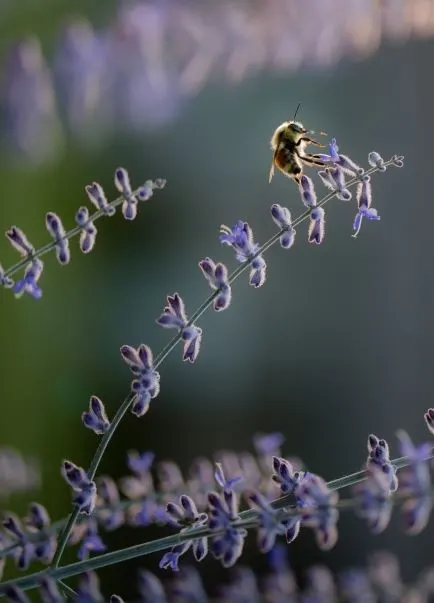
The program works to create new habitats for the Rusty Patched Bumble Bee, mentioned earlier, and other endangered pollinators in Minnesota and even provides funding for you to do so.
These new habitats, containing native wildflowers and prairie grasses, can be part of your backyard, the median between street lanes or other neighborhood areas. Anything helps!
You can also encourage the continued protection of larger habitat areas. I frequently support my local Nature Center and its Reserve area. There’s a pair of mated sand cranes that return to the Reserve every year to breed. This has been occurring for the last 7 years!
The sand cranes’ seasonal return is also a perfect example of one of the animal adaptions that is behavioral and that I have personally witnessed.
With such a protected and plentiful area to raise their young, these sand cranes will continue to return to this ecosystem we have set aside for them.
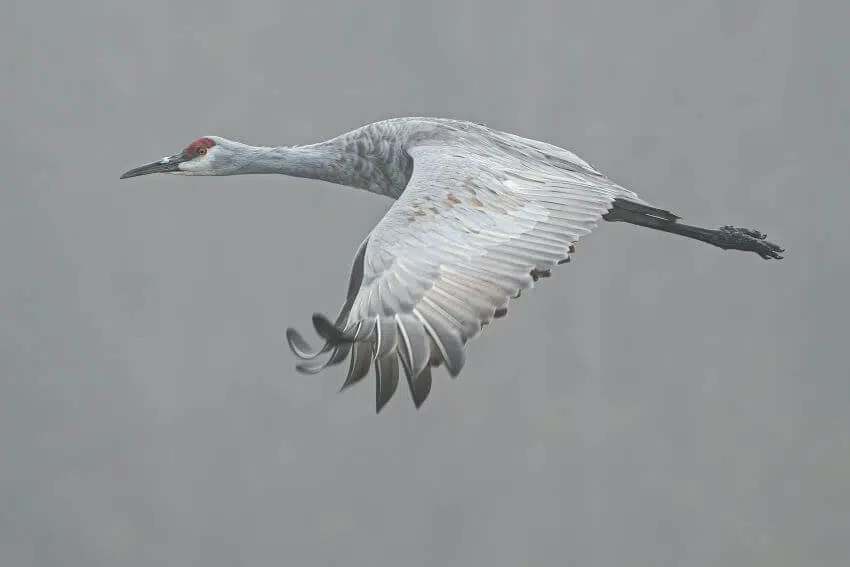
Join our newsletter below for more information on how you can help!
Related Resources
